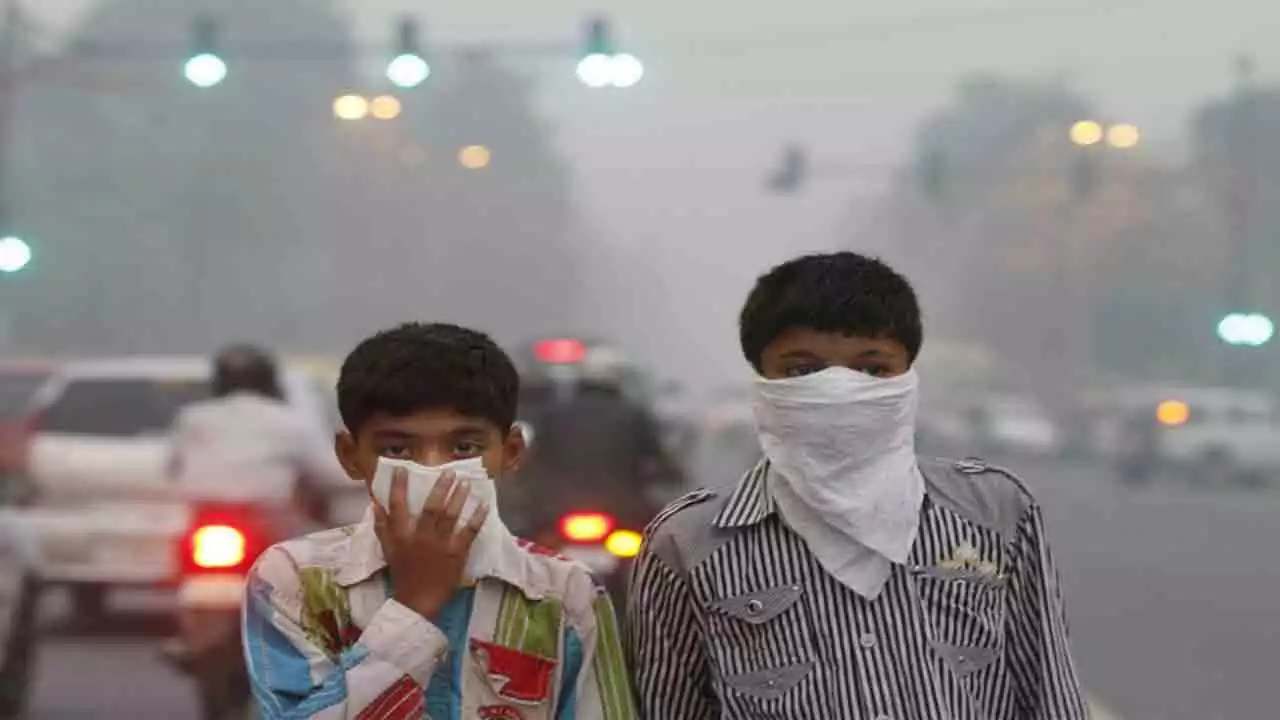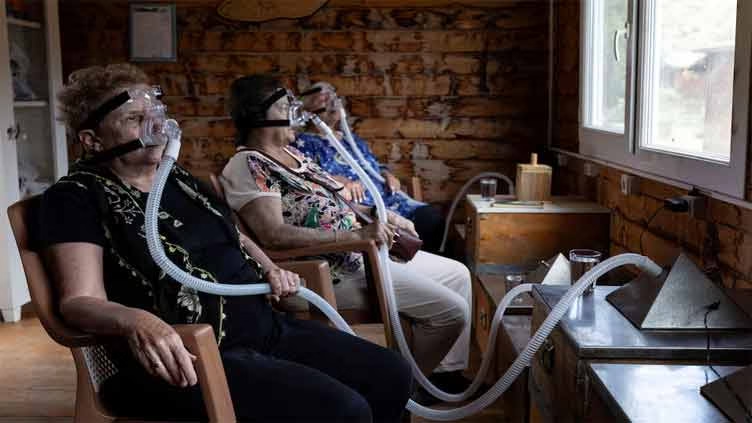In recent weeks, citizens across various cities have begun experiencing the adverse effects of severe air pollution, smog, and a dry cold climate. The rise in air quality deterioration has led to an alarming increase in cases of influenza, viral infections, dry coughs, and breathing problems, prompting hospitals to deal with an overwhelming influx of patients. The combination of smog and seasonal changes has significantly worsened the public health crisis, with pneumonia, chest infections, and eye irritations adding to the growing concern.
The Impact of Air Pollution on Public Health
Air pollution, specifically smog, has been linked to several health issues, and as pollution levels rise, so do respiratory illnesses. Hospitals are seeing an unprecedented number of patients suffering from breathing difficulties, dry coughs, and viral infections. In the past four days alone, the city’s five major government hospitals have reported thousands of cases related to smog and its harmful effects.
Mayo Hospital has reported more than 2,500 patients affected by smog-related illnesses, while Jinnah Hospital and Gangaram Hospital have each treated over 2,000 patients. Similarly, thousands more have been admitted to Services Hospital and General Hospital, further straining the healthcare system.
The situation is becoming critical, as hospitals struggle to manage the influx of patients. Many individuals are reporting severe respiratory problems, including dry coughs, chest infections, and breathing difficulties, which have been aggravated by the poor air quality. Doctors warn that prolonged exposure to smog can lead to more severe conditions, including pneumonia and even long-term lung damage, particularly in vulnerable groups such as children and the elderly.
Vulnerable Groups: Children, Heart Patients, and Asthmatics
Children, in particular, are suffering the brunt of this smog-induced health crisis. Pediatric cases of pneumonia and chest infections are on the rise, with young patients being especially susceptible to the harmful effects of poor air quality. Smog particles are small enough to penetrate deep into the lungs, making children more vulnerable to respiratory infections and exacerbating pre-existing conditions like asthma.
Additionally, patients with chronic conditions such as heart disease and asthma are at higher risk. Smog causes inflammation of the respiratory system, making it difficult for these patients to breathe and leading to serious health complications. Many asthmatic patients have reported worsened symptoms, while those with heart conditions have experienced an increase in chest pain and discomfort due to reduced oxygen levels in the air.
Eye Irritation and Skin Rashes: Smog’s Effect Beyond the Lungs
Smog doesn’t just affect the lungs—it can irritate the eyes and cause skin problems as well. Eye irritation, including redness, itching, and burning sensations, is becoming increasingly common among residents exposed to heavy smog. This discomfort is caused by the high levels of pollutants in the air, which can inflame the delicate tissues of the eyes.
Similarly, skin rashes and allergic reactions are on the rise. Pollutants in the air can cause skin irritation, leading to conditions like dermatitis or aggravating existing skin issues. The fine particulate matter present in smog can settle on the skin, leading to dryness, rashes, and itching, particularly in individuals with sensitive skin.
Influenza Flu Vaccine Shortage: A New Challenge
As if the rising health problems caused by air pollution weren’t enough, the flu season has exacerbated the situation. Influenza cases have spiked, and the demand for flu vaccines has surged. Unfortunately, this increased demand has led to a shortage of the influenza vaccine, leaving many vulnerable individuals, particularly the elderly and those with compromised immune systems, without access to protection against the flu.
Hospitals are facing a dual challenge: managing the overwhelming number of patients suffering from smog-related illnesses while also trying to provide care for those affected by the flu and viral infections. The shortage of vaccines adds to the complexity of the situation, leaving healthcare providers struggling to meet the needs of their patients.
Government Response and Public Awareness
The government and health authorities need to take urgent action to address this growing health crisis. Measures to reduce air pollution, such as regulating emissions from vehicles and factories, are essential to improving air quality and preventing further health damage. Increased public awareness campaigns are also necessary to educate citizens on how to protect themselves from the harmful effects of smog.
Individuals can take certain precautions, such as wearing masks, using air purifiers indoors, and limiting outdoor activities during peak pollution hours. It is also important for those with pre-existing conditions like asthma or heart disease to take extra care, as they are more vulnerable to the effects of smog.
The impact of smog and air pollution on public health is undeniable. The rising cases of respiratory illnesses, viral infections, and eye and skin irritations are placing an enormous burden on the healthcare system. With children, heart patients, and asthmatics among the most affected, the situation is growing more critical with each passing day.
Immediate government action, public health measures, and increased public awareness are needed to mitigate the effects of air pollution and protect citizens from the long-term health consequences of smog. As the winter season approaches, and with the influenza vaccine shortage adding to the challenge, it’s clear that this health crisis requires urgent and comprehensive solutions to safeguard the well-being of the population.



